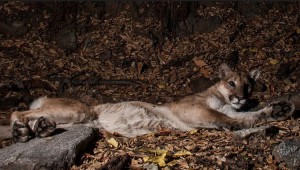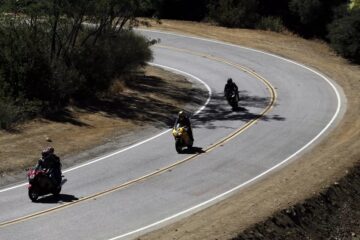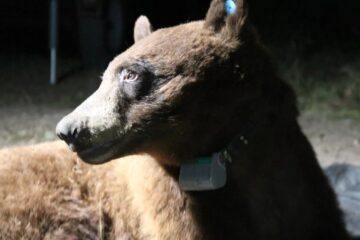Meet the Verdugo Mountains’ very own mountain lion: P-41
The Verdugo Mountains are his home. He’s P-41, a male mountain lion who is ‘kind of a ham’
Source of this article: The Los Angeles Times, May 29, 2015
Johanna Turner, a sound effects editor for Universal Studios, joined the ranks of citizen scientists years ago, placing remote cameras in the San Gabriel Mountains to record the movements of wildlife.
After the 2009 Station fire tore through the San Gabriels, Turner moved her photographic equipment to the nearby Verdugo Mountains, a small, isolated range that includes portions of Los Angeles, Burbank and Glendale.
Within two weeks, in spring 2010, her motion-activated lenses had captured video and still shots of a mature male puma. Over time, she and a fellow amateur, Denis Callet, shared a succession of their images with a National Park Service biologist, who on May 7 caught and collared the animal.
He now has a name: P-41.
The approximately 8-year-old, 130-pound animal is the first large carnivore to be studied in the Verdugos, a 19-square-mile range that lies a few miles from the eastern end of the Santa Monica Mountains, where scientists have studied mountain lions since 2002. Scientists are now tracking 11 in the region.
The National Park Service said this week that scientists suspected there might be significant genetic differences between mountain lion populations in the two ranges. UCLA will conduct DNA tests on samples of P-41’s blood and tissue.
“We know nothing about mountain lions” in the Verdugo region, said Jeff Sikich, the wildlife biologist who captured P-41.

The approximately 8-year-old, 130-pound mountain lion known as P-41 is the first large carnivore to be studied in the Verdugo Mountains.
Sikich opened traps in the area and, after just three days, caught the puma and attached a GPS and radio collar.
He said the data the agency collected from the collar would help researchers understand how the big cats moved between areas.
On Wednesday, Sikich drove a dusty, white park service Dodge Ram truck along the Verdugo Motorway — a fire road that winds through hillsides laden with laurel sumac, sage, fiery-red poison oak and blooming yucca plants. He negotiated sharp turns and rutted stretches of road, slowing for hikers and mountain bikers who from the road could peer down on Bob Hope Airport, factories, office buildings and houses.
His antenna failed to pick up any beeps from P-41’s collar, but earlier GPS data had shown him to be in a canyon.
Seth Riley, a wildlife ecologist for the park service, said the Verdugos present a small territory for a male mountain lion, which typically covers as much as 250 square miles.
P-22, the Griffith Park mountain lion, has thrived since early 2012 in an even smaller space — about eight square miles, believed to be the smallest home range of any adult male ever recorded. As surveillance cameras have shown, he occasionally ventures into adjoining residential areas for nocturnal walkabouts.
P-22, who is about 6 years old, apparently has lived a solitary existence in his tiny zone, prompting one fan to nickname him “El Soltero,” the bachelor.
Scientists suspect that P-41 might be using the southern San Gabriel Mountains as part of his territory, a feat that would involve regular crossings of the 210 Freeway.
A remote camera that Turner stationed at the home of friends in Sunland, in the San Gabriel foothills, showed a big cat exploring their back deck. A slight notch on his right ear and a scar from a tick bite on his left shoulder confirmed that it was P-41.
“He spent three months over the winter north of the 210,” said Turner, who also has video of P-41 resting, grooming and climbing rocks. “He’s kind of a ham.”





0 Comments